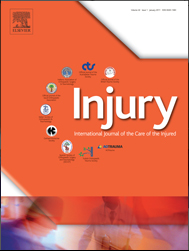
TRAUMA
Conventional vs biologic subtrochanteric hip fracture fixation with proximal locked plate
This report has been verified
by one or more authors of the
original publication.
Injury. 2016 Jun;47(6):1309-17
46 patients with a comminuted subtrochanteric femoral fracture were randomized to one of two different fixation groups. One group underwent open reduction and internal plate fixation with a limited exposure technique, "joy-stick" reduction under C-arm imaging, and submuscular plate placement ("biological fixation" group). The other group underwent standard ORIF (direct fixation group). Significant differences observed between groups included a significantly shorter operative time, shorter length of incision, and significantly lower blood loss in the biological fixation group compared to the direct group, but also significantly higher exposure time to fluoroscopy. No significant differences between groups were observed in either fracture healing, complications, or clinical outcome after 11 months.
Unlock the full ACE Report
You have access to {0} free articles per month.Click below to unlock and view this {1}
Unlock NowCritical appraisals of the latest, high-impact randomized controlled trials and systematic reviews in orthopaedics
Access to OrthoEvidence podcast content, including collaborations with the Journal of Bone and Joint Surgery, interviews with internationally recognized surgeons, and roundtable discussions on orthopaedic news and topics
Subscription to The Pulse, a twice-weekly evidence-based newsletter designed to help you make better clinical decisions
Exclusive access to original content articles, including in-house systematic reviews, and articles on health research methods and hot orthopaedic topics
Or upgrade today and gain access to all OrthoEvidence content for just $1.99 per week.
Already have an account? Log in


Subscribe to "The Pulse"
Evidence-Based Orthopaedics direct to your inbox.
{0} of {1} free articles
Become an OrthoEvidence Premium Member. Expand your perspective with high-quality evidence.
Upgrade Now













































































